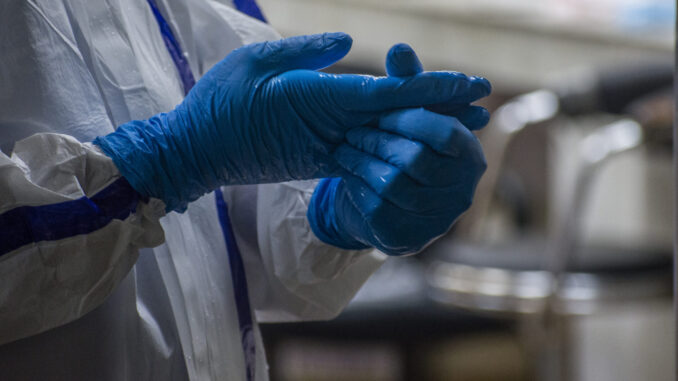
Mumbai — Ten million health care workers in India will be the first to get the Covid-19 vaccine whenever it becomes available.
As in other countries, the first vaccine doses will be given to frontline workers, including doctors, nurses, paramedics, sanitary staff, surveillance officers, and accredited social health activist workers.
While India has not yet approved a Covid-19 vaccine, all states have started preparing for large vaccination drives by setting aside warehouses and cold-chain facilities, identifying manpower, gathering data, and working out other logistics.
India is conducting trials for different vaccines. AstraZeneca-Oxford’s vaccine, which will be manufactured in India by Serum Institute, will have to be refrigerated at 2-8 degrees Celsius (35-39 degrees Fahrenheit). It is the vaccine most likely to be delivered first to the Indian population.
Indian states have been asked to form teams of vaccinators, including auxiliary nurse midwives, nurses, pharmacists, multipurpose workers and volunteers for crowd management. Each team will be designated at a vaccine booth and allowed to administer 100 doses per day.
“There is no clear instruction on the locations for vaccinations as yet,” said Dr. N. Ramaswami, commissioner of health services in Maharashtra, the state with the highest number of Covid-19 cases and deaths in the country. “We also don’t know how soon we will start the vaccination as none of the vaccines have received approval yet.”
Ramaswami said Maharashtra state has “plenty of existing cold chain facilities. However, we are making six walk-in coolers and two walk-in freezers in the state if the additional requirement arises.”
States have been asked to submit and upload health care workers’ data on the Co-Win software developed by the Ministry of Health and Family Welfare by next week. Once health care workers are vaccinated, an estimated 20 million other frontline workers, including police, municipal workers, armed forces and disaster management workers, will be in line, according to priorities set by the National Expert Group on Vaccine Administration for Covid-19.
Next, people over age 50 with comorbidities, such as heart disease and diabetes, will be vaccinated, followed by people younger than 50 with comorbidities. Public health departments in every state have prepared information on how the vaccine will be distributed.
“We have submitted the 99 percent data of health care workers in the public sector and nearly 76 percent data of health care workers from the private sector,” said Ramaswami.
India is the second-worst affected country after the United States with 9.6 million Covid-19 cases and 139,000 deaths as of Dec. 4. Maharashtra state has recorded 1.8 million cases and over 47,000 deaths.
The Health Ministry is assessing the additional requirement of walk-in coolers, walk-in freezers, deep freezers and ice-lined refrigerators in all states and union territories. The ministry has also asked states to expand their Adverse Events Following Immunization (AEFI) committees by including neurologists, cardiologists and respiratory medicine specialists and ensure the availability of appropriate kits to manage possible sudden side effects of the vaccine.
“This massive exercise of vaccination is something new for all countries across the globe, and one of the crucial challenges will be reaching out to people,” said vaccination expert Dr. Naveen Thacker. “In India, vaccination programs have a passive demand and people generally follow the crowd. Rarely do they make conscious decisions by understanding the importance of why vaccination is needed. This passive demand fluctuates with good or bad news about the vaccination, reports of adverse reactions, etc. Therefore, India will have to put in massive efforts in communication and spreading awareness. A well-formed communication strategy and management of adverse events following immunization will be crucial.”
“As far as the cold-chain points are concerned, India will be able to rely on the existing infrastructure of the Universal Immunization Programme,” said Thacker. “The existing programs may have to make some adjustments to avoid any disruption.”
India’s Universal Immunization Programme is one of the largest public health programs, targeting nearly 26 million newborns and 29 million pregnant women annually.
Under the program, free immunizations are provided against 12 diseases, including diphtheria, pertussis, tetanus, polio, measles, rubella, and certain types of pneumonia, among others.
Indian virologist Dr. T. Jacob John stressed the importance of planning.
“The vaccination plan has to calculate and take into consideration the minutest of details,” said John. “Where will the vaccination take place? What will happen if someone becomes unconscious after getting the shot? How long should the person wait after being injected with the vaccine? These are just a few of the many tiny details that need to be planned accurately.
“In India, standards are diluted easily,” said he said. “That should not happen.”
(Edited by Uttaran Das Gupta and Judith Isacoff)
The post India Prepares to Vaccinate 10M Health Care Workers appeared first on Zenger News.
